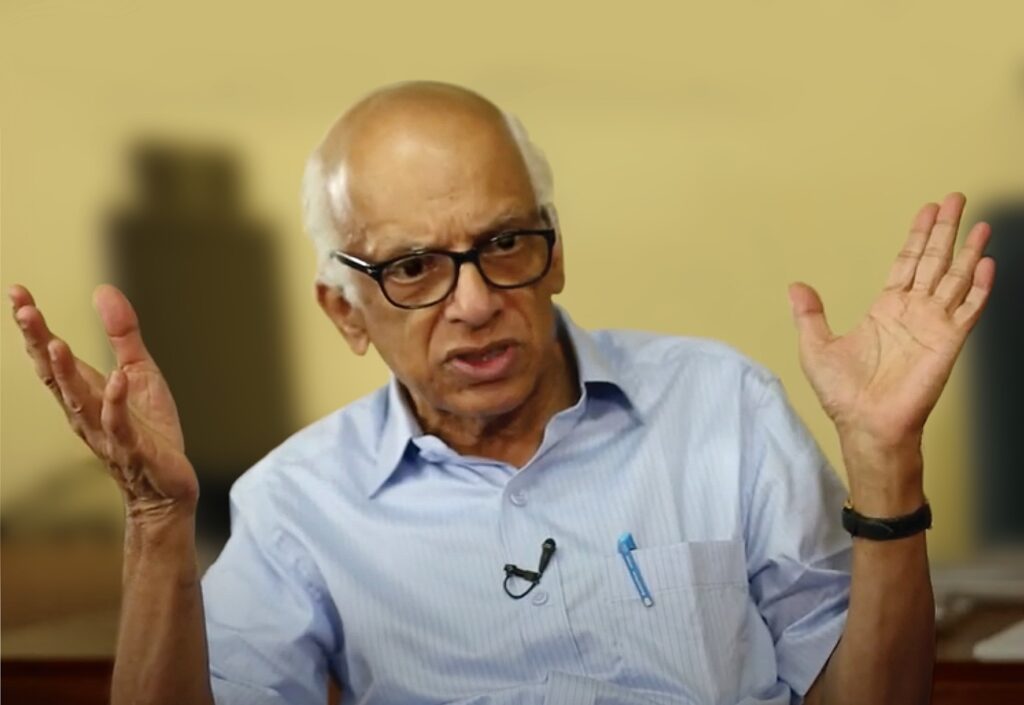
Admittedly taking to mathematics by accident, M.S. Raghunathan shot into the limelight very early in his career. Entering the exciting portals of TIFR at nineteen, his has been by far the longest innings by an academician in that elite institution, spanning half a century of active and distinguished service to mathematics in India. From the several vantage positions he has held, serving on many signal committees be it on the International Mathematical Union, the Abel Prize Committee or the National Board for Higher Mathematics, he has carried them all with elan. Easily accessible, energetic in demeanour, spontaneous in response, judicious talking about his own significant contributions while situating them on the overall mathematical firmament, Raghunathan is a favourite among a wide spectrum of interviewers. It is no wonder that when Bhāvanā was preparing to feature an `In conversation’ session with him, the team found it profitable to showcase his personality gathering from a bag of already existing insightful and informative interviews. In presenting a fairly comprehensive portrait of a highly celebrated mathematician of our times, decorated with several coveted honours, we have liberally drawn from the five episodes captured by the Robin Reels Production, apart from our own rendezvous with him for over an hour, while mainly centring around the very lively conversation that a young band of four budding mathematicians engaged with him at his 80th birthday conference in August 2021. We take great pleasure to leave you for a first-hand experience of reading his eclectic responses.
How were your childhood days, growing up in Chennai (erstwhile Madras)? We would like to hear about things that fascinated you, about your parents, their thoughts for your future, your own interests and pursuits.
MSR:I grew up in a fairly rich household. In fact, in the local milieu, we were among the richer people. In my school days, I had no particular influence which directed me towards mathematics, no, none at all. And, there was no particular exposure to mathematics in my early days, even arithmetic. However, my mother, Ambuja by name, was always very keen that I should acquire a lot of knowledge. And she came from a family that was more into intellectual activity. My maternal grandfather was a professor of English in the Madras Educational Service, and he was somewhat unusual. He was not merely a teacher, he actually did some original research. He worked on some of William Makepeace Thackeray’s novels. So he had acquired a reputation of being a researcher, which was very unusual among college teachers in those days.
On my father’s side, they were mostly businessmen. My paternal grandfather ran a very successful timber business which my father joined as a partner along with his brothers. We lived in a big joint family. But as I said, any intellectual influence came from my mother’s side. My father, Santanam, was a very intelligent man. He was not keen on reading. But he was very practical. He had a degree in science—a BSc in Physics. He was very good at technical things. When something went wrong, say with the electricity at home, he could fix it. He had that kind of ability. But not very intellectually inclined. He respected learning though, without question. The family on the paternal side were not as excited about learning and knowledge, as the people on my maternal side.
My paternal grandfather ran a very successful timber business which my father joined
We have heard that you had learned quite a bit of Sanskrit in your younger days. Did you study much by yourself?
MSR:You see, I belong to a Brahmin family and, like in any Brahmin family of those times, they would encourage people to learn some Sanskrit which, in those days, was taught in schools. Actually, my scholarship in Sanskrit is not very deep, it’s not very wide either.
My mother came from a family that was more into intellectual activity
I did study some things beyond what was prescribed in school. In one of the schools where I spent three years, they were not paying too much attention to the children. Sanskrit was an option available. So I did take Sanskrit, but it was taught rather indifferently, and I did not take any interest either. What happened was this: I was then in the fourth form, which now corresponds to the 9th standard. By the way, back in those days, the first five grades were called classes, and then began the first form, the second form and so on, up to the sixth form. The sixth form was when one wrote the board exam, the SSC. It was eleven years in school those days. I discovered that I was not paying attention in class. I felt I knew very little Sanskrit and that kind of bothered me because I was used to being good at everything in class. I thought I had not learned Sanskrit properly.
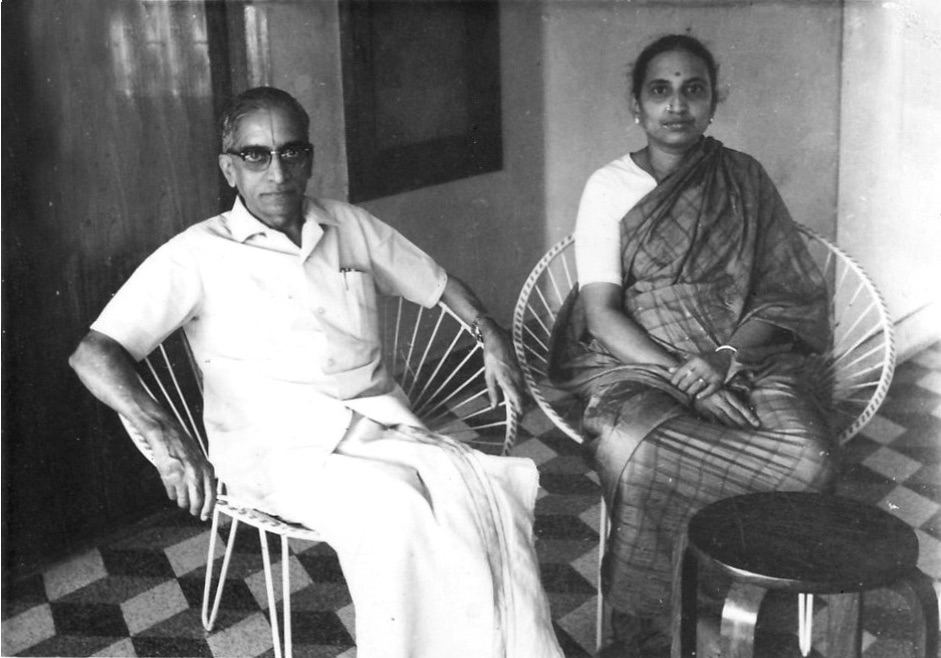
Do you remember much about your school years? We would like to hear more.
MSR:I liked Sanskrit, but the thing is that I liked practically everything I was learning at school. Whether it was history or geography or science or mathematics, everything fascinated me. History, for instance, fascinated me greatly, and so did science. I was clearly recognized as being good at arithmetic. I could do mental sums far more quickly than most of my classmates. As a matter of fact, I had no particular attraction to mathematics in my school days. That came much much later, only after I joined the Tata institute, and practically when I embarked on my career in mathematics.
I went to three different schools in Chennai. The first was started at kindergarten and I was there for the first six standards. It was a school run by a German woman who was married to an Andhra gentleman, a lady by the name of Ellen Sharma. She was a very pleasant lady. I liked that school. Then I moved to a bigger school called Pennathur Subrahmanya Iyer High School where I studied for three years. I did not enjoy that school as much as the earlier one. But it was okay, no complaints really. In fact, in some ways, it was good because they didn’t bother me. The school gave me no homework, which was perfectly acceptable. Not to my mother though (laughs). So they shifted me to another school of The Madras Christian College School which enforced better discipline, and where the medium of instruction was English. The earlier schools were Tamil medium schools. I had learned some English at home, so the shift did not cause me any great difficulty. I entered the new school without any problems, and I studied there for the last two years of my school.
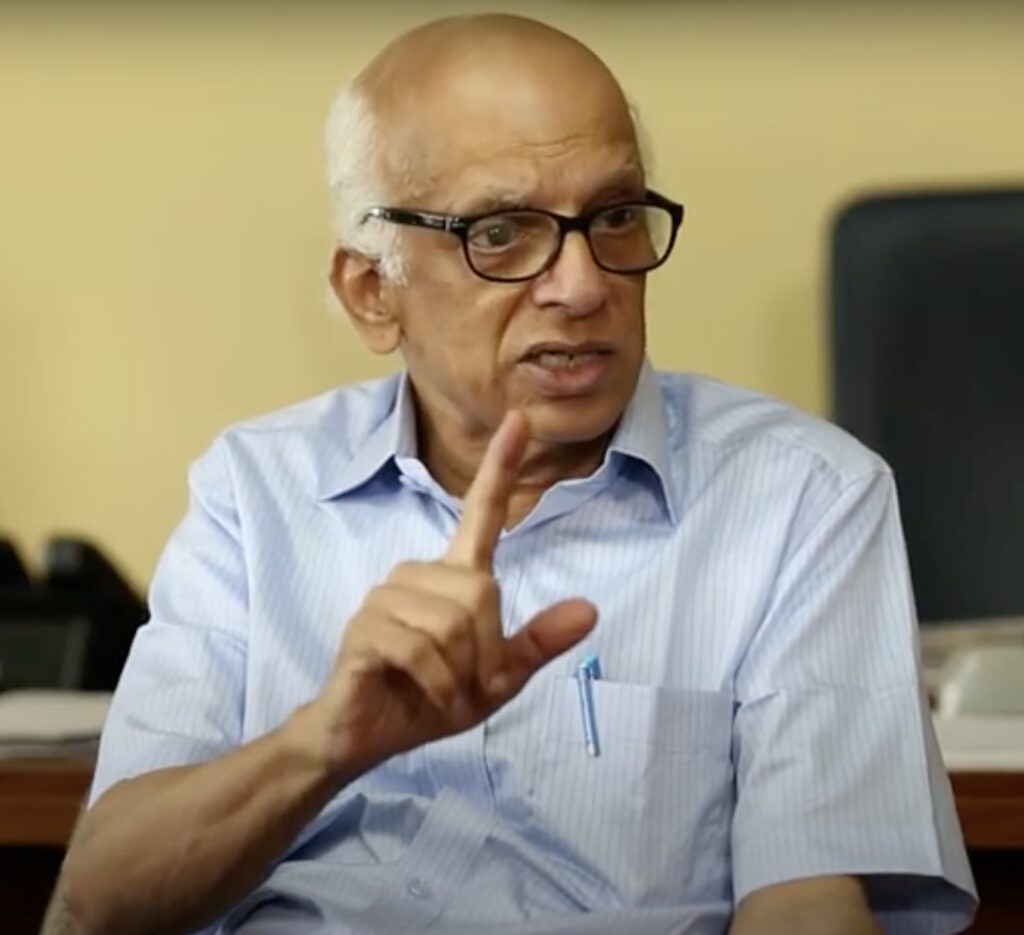
I liked practically everything I was learning at school
Throughout my school, it was remarkable that I had good teachers. And one teacher whom I remember is a man by the name of Charyulu who taught us physics. He would come up with questions in the class which were quite intriguing and quite unusual. It gave me great pleasure because I happened to be one of the people who would answer it early on, especially if it was mathematics. He used to give us problems both in mathematics and physics, every science subject in fact. In mathematics, I was practically always the first one to come up with the solution, which pleased me immensely. And so, I enjoyed those things, it was very good.
We are now eager to hear about your undergraduate days, including your days in Bangalore…
MSR:After eleven years at school, after SSC those days, one entered college. And I went to Bangalore to study, in what they then called Intermediate. I had to go to Bangalore because I couldn’t get admission to colleges that were affiliated with the University of Madras. The University of Madras had a peculiar rule that you can enter the university only if you’ve crossed the age of fourteen and a half. No matter what stage, whether it’s intermediate or undergraduate or the master’s degree, to enter it you needed to be fourteen and a half. I was not fourteen and a half yet when I finished my SSC, so I had to go elsewhere to study if I wanted to continue college. It so happened that Mysore University did not have that regulation, and so I went to St. Joseph’s College in Bangalore.
That was fine, but it was not exactly exciting. There too, I did have good teachers, I must say. In one sense, I did enjoy myself a little bit because I had along with me a number of classmates who all shared a hostel room. I used to teach mathematics to many of them. People recognized that I had some ability for mathematics. Even then, I cannot say I was more excited by mathematics than physics. If anything, in those days I was probably more fascinated by physics. All this, I must say, was a general perception of both of myself and my teachers, but it never reflected in my marks! My marks lingered around 70 per cent at best, in all the science subjects. For example, I’ve never scored, never ever, 100 per cent in any paper in mathematics. Be it in a test, or an exam, or anytime.
But were you noticed as someone who would solve difficult problems?
MSR:You see, the point is this. From early on, I could make a clear distinction between being able to understand something and being able to score marks. Even in my early school days, I more or less knew how many marks I would get when I got back from an exam. My mother was always expectant, she wanted me to perform well and wanted me to come first in class. So when I came back from an exam, she would ask me how I had done and I would declare that I would get such and such marks. I was almost always correct. I never got anything more, which made her doubly disappointed because she knew that once I had said there was no use expecting anything better, that is how it would turn out. But I must say that despite all this, I was convinced, and so were my teachers, that I was a bright kid, that I understood what was being taught in mathematics, even though my marks were never great.
After two years of studying in St. Joseph’s, you came back to Chennai to join Vivekananda College…
MSR:Ya, to do my undergraduate studies, I came back to Chennai, then called Madras. I was not clear about what I wanted to do. I had more or less decided on doing science. I applied for degree courses in physics, chemistry, mathematics, all three science subjects. There were two kinds of degrees awarded, I mean two kinds of undergraduate programs at Madras University. One was called BSc Honours, or BA Honours, and the other was called plain BSc, or BA. It’s a little different from what existed in the north where the Honours course was for two years, whereas in Madras it was for three years. At the end of three years in the BA Honours course, you wrote the same exam as the people who wrote the Master’s exam. However, you were not awarded the Master’s degree, you were only given a degree called `BA Honours’. It’s a very peculiar thing, but after one year, you could claim an MA degree and the degree certificate stated “MA by efflux of time”. Probably a quaint British practice, which was taken over by our universities.
The BA Honours course, though a three-year course, covered material that normally took four years, and was considered more prestigious. Admission was a little more strict to it, and there was a lot of competition. When I applied, I couldn’t get admission to either physics or chemistry because there was much more demand for them. Mathematics honours was the only thing to which I could get admission. I had also applied to the so-called pass courses in physics, and they did give me admission to physics pass courses, but I was a bit of a snob. I thought I was far too bright to take a pass course, and I opted for mathematics honours. If I had got physics honours, I would have probably taken it. And it probably would have been a mistake. But anyway, I took mathematics honours which was available in a college very nearby, the Vivekananda College, run by the Ramakrishna Math.
That’s the college I joined. Once again, I enjoyed myself. I had good teachers. Perhaps some were not very knowledgeable beyond what they were supposed to teach, but what they were teaching they knew very well.
I’ve never scored, never ever, 100 percent in any paper in mathematics
In my first undergraduate year, I just fooled around. I was always attentive in class, but I never bothered to do any work at home. I didn’t take things too seriously. At the end of the year when I wrote the final examination, I scored very poor marks in one of the papers. I scored only 40 per cent. That was not unusual for me, but what I realized, when writing the paper, was that there were many things I had not understood. That was the first time I felt really unhappy, because this time, the poor marks were the result of poor understanding. So I studied hard during the vacation and I found the subject, mathematical analysis, extremely enjoyable. I kept at it, and I found that I was always heading the class. I was always one step ahead of the teacher, and I found that analysis was the most exciting subject for me. And that was probably what turned me to a career in mathematics eventually. Though even at that stage, I had not made up my mind about pursuing mathematics. I still had ideas of going back to physics and I also had this idea that maybe I’ll write the civil service examination, IAS. An uncle of mine, my mother’s brother, who was in the IAS, was one of the role models.
How did you come to choose mathematics as a career option eventually?
MSR:I really had no clear idea what research meant when I completed the degree. At one point, during my intermediate days, there was some visitor to the class who was asking students what they wanted to do afterwards. One of my fellow students said that he wanted to do nuclear physics. That impressed me very much, and I myself started saying that I wanted to do nuclear physics, even though I didn’t know what it meant.
I really had no clear idea what research meant when I completed the degree

In a way, I must say that I became a mathematician by accident. I had applied to TIFR to join as a research scholar. In the interview at TIFR, I thought I had not performed well at all. But as it turned out, my interviewers thought differently and offered me a position there. I learnt that some 200 people had applied, that only two people had been chosen, and that I was one of only two. That was very flattering, a boost to my vanity, and it seemed to validate my inner confidence regarding my own abilities, and that is the reason I took it. So I joined TIFR because of that.
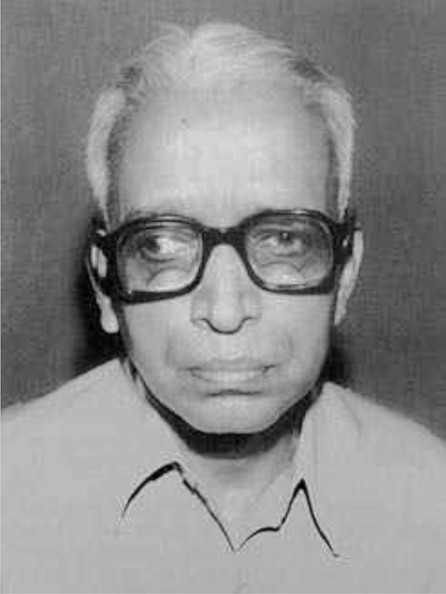
So that’s how I started my career as a mathematician. In a sense, I did much better in mathematics. During my school days, I was already trying to see if I could find a method for extracting cube roots like you do for square roots. I tried very hard for months on it, and I was at it, but nothing came of it; similarly, I tried to trisect an angle too at around the same time. But I realised that for both the cases—trisecting an angle, and finding cubic roots, my methods didn’t work. I was also not stupid enough to continue after a certain point.
We know that TIFR interviews are quite famous for being grilling. Who were the panellists in your interview? Is there a favourite question from that experience that you remember?
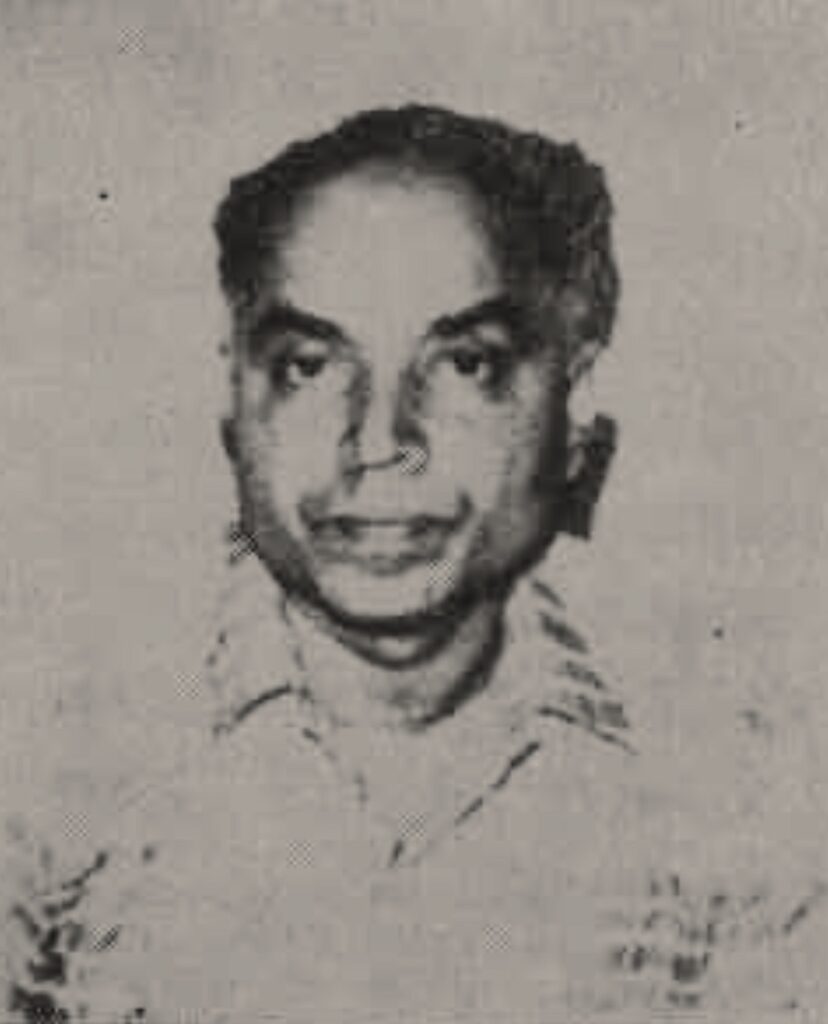
MSR:I remember the interview quite vividly. K. Chandrasekharan was the chair of the selection committee. Then there was K.G. Ramanathan, S.S. Rangachari and B.V. Singbal. The interview didn’t go very well as I saw it at that time. Singbal asked me some questions one after another and I kept on giving the wrong answers, but successively kept correcting them when he asked if I was sure if that was right.
It was a step by step correction, and obviously what they were looking for was to see whether I could think and if I was able to correct a wrong statement I made. I didn’t realise that, and so I thought my interview was a washout. Also, Chandrashekharan asked me a question about the sum of the logarithmic series. That is, to prove that the series for ln 2 is 1- 1/2+ 1/3 - 1/4 + \cdots, the alternating harmonic series, and I struggled with it. At that point, Chandrasekharan said: “Oh, he must have mugged it up and is unable to reproduce it here.” I was furious because mugging was something I never did, but what could you do? I had to suppress my anger. I had given a talk while at the Vivekananda college on something about convergence of series that I had written up. I had even submitted it along with my application. So I was very annoyed that they didn’t ask me anything about it. Anyway, that’s the way it worked, and at the end of the interview, I was convinced that I would not be selected.
I didn’t know what a group, a ring or a module was when I joined the Tata Institute
A curious thing happened on my way back home after my interview. Around this time, George Fernandes had announced a railway strike, and so I couldn’t go back by train. An uncle of mine with whom I was staying bought me an air ticket and put me on a flight. That was my first flight. When I went home and reported to my father that I had not done very well, he was very annoyed. He said, “if you had done well and taken a flight, I wouldn’t have minded.”
You must have been mightily pleased when you actually made it.
MSR:Ya, naturally. When I got the telegram I was of course very happy. I had just finished my degree and had several choices but this was the most attractive because I was only one of the two who were selected that year. Even though I liked mathematics and had done mathematics honours, I had no particular fancy for mathematics. Anyway, I eventually joined TIFR.
You joined TIFR as a student when you were quite young. Dani wrote an article when you were elected to the Royal Society of London, the FRS. Therein, he mentions that you were called Baccha1 those days. The name doesn’t seem to have lingered. Is there anyone who still calls you that?
MSR:Not really. I was called Baccha for the first two or three years so to speak, often by my senior colleagues and by some senior students. In fact, M.S. Narasimhan and C.S. Seshadri never did that. Relationships with them were a little less informal than with people like S. Ramanan. The person who started calling me Baccha first was Sundar Lal. He was one year senior to me, but probably several years older, and he went away to Chandigarh. He was probably the first to call me Baccha, and then others followed.
How was your experience working with M.S. Narasimhan? Please share some interesting interactions you have had with him.
MSR:My interactions with Narasimhan have been great. In those days, you would join as a research assistant. You were not called a research scholar. It was a kind of a regular job with a standard pay scale, and it was a contract for 5 years that could be extended, and so on. Your job was simply to study mathematics, and undertake research at some point.
At TIFR, it was always insisted that you learn a lot of mathematics. Even during my masters degree, I had not learnt any set topology, or even “modern” algebra for instance. It was the British syllabus of the pre-1900 era that had been imported into Indian universities, very old fashioned. The British had changed things back home in their own colleges, but that had not happened in India. We studied a lot of applied mathematics, particle dynamics, fluid dynamics, and so on. Each one of these was a separate paper for the examination. We learnt all these things, but they were all stuff that essentially belonged to the nineteenth century. No twentieth-century material was included, barring a few minor things, but basically, the whole course was modelled along the lines of the so-called Cambridge Tripos. That was the way most honours courses were modelled on, and our teachers would often bring Tripos problems to the class and give them as an exercise for us to try. In the final exam too, they used to take out questions from the Cambridge Tripos, and post them.
When I came to the Tata Institute, my background was very poor in most things. At the Tata Institute, they were not interested in any applied mathematics. The only things we were taught were pure mathematics subjects, like courses on algebra, analysis, topology, and complex analysis in the first year. I didn’t know what a group, a ring or a module was when I joined the Tata Institute.
In that year, two of us were selected but the other candidate didn’t join. So I was the only one, and the faculty decided that they could not have courses for just one student. I was kind of told what to read, which I didn’t find difficult to do. For one thing, all my senior students were very helpful. Whenever I had doubts, I could go and have my doubts cleared with them, and I also found the recommended books quite readable, and interesting. And I made good progress.
At that point in time, there were also some lectures being given to the Bombay university teachers in a teacher training and enrichment program that the Tata Institute conducted. They were not courses designed for students in the regular fashion. It was meant to rectify and correct some observed lacuna in the understanding of the subject matter by practising teachers. I attended those lectures and found some of them quite interesting. That’s the way I learnt mathematics in the first year.
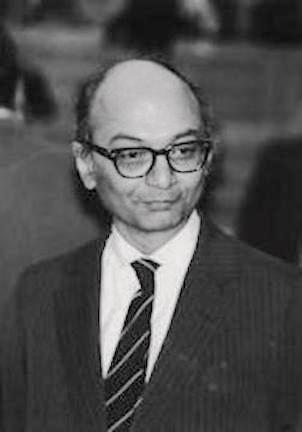
In the second year, I took more advanced courses and slowly grew in confidence. There was a seminar organised by M.S. Narasimhan and S. Ramanan in differential geometry which I attended. I took notes very systematically. In my college days, I never took any notes in any class. I had a fairly quick grasp of things and I had a good retentive memory. I didn’t have to take down notes that could be referred to later. In fact, what I used to do in class was to doodle and draw pictures. But for the first time at the Tata Institute, I started taking notes. By the way, even in the first year, I worked hard; which I had never done in my college days. I really worked hard, partly because there was this whole charged up atmosphere there. I found that everybody was working hard. Nobody was fooling around, and they were all bright students.
In my college days, I had three or four friends who were very bright, but it was clear that I belonged to a so-called elite bunch, if you like. We were good, and so it didn’t take much of an effort from my side to understand what was going on in the class, but in the Tata Institute, I was literally all on my own. I had no comparisons to make. If any, I had to do it with my senior students, and my senior students of course knew all the things I was supposed to learn. So, I had to make sure that I was as good as they were at the end of the first year.

They received help from a professor at Madras University whom they knew and were therefore exposed to more advanced topics. In fact, when they joined the Tata Institute, they knew as much as what most students would know at the end of their first year, or perhaps even more. These two were ready examples for me to be inspired by. And there were also others who had started off like me, but whom I found had learnt a hell of a lot of mathematics. S. Ramanan was one of them, and all these people were now my role models. All of this made me work very hard, and then around the same time, M.S. Narasimhan and S. Ramanan organised the seminar I mentioned which turned out to be a wonderful experience. I found it very exciting, and as I said earlier, I took notes diligently.
Raghavan Narasimhan and C.P. Ramanujam were ready examples for me to be inspired by
Narasimhan was easy to talk to, and for any problem that I had, he would explain things carefully to me, and his lectures were very good. Narasimhan and Ramanan were the two people who lectured then, and I got hooked on to the subject of differential geometry. I began to like it more and more. I also studied some algebraic topology at the same time. Topology was something that had fascinated me greatly in the first year. I had started trying to learn some algebraic topology on my own towards the end of the first year. At the end of the second year, I persuaded Ramanan to give me some lectures in algebraic topology, which he did. It was one of the most beautiful sets of lectures I have ever heard from anybody, and again, I took diligent notes. I worked quite hard, but I was also enjoying myself. I realized that hard work can be quite enjoyable. When you are working hard on something which you like, and which you enjoy, it’s actually a matter of great joy and pleasure. All my senior students were like that too. The point is that once you get a feel for it, mathematics is beautiful. Of course, you want to pursue something that is both beautiful and enjoyable, without a question.
How did it transition to your eventual research career?
MSR:Well, in the third year again, I continued to talk about some differential geometric ideas with Narasimhan. Narasimhan then told me about what is called the Kodaira–Spencer theory of deformation of complex structures, and I must say that he was an excellent teacher. In the classroom, he was okay. But in a one-on-one situation, when he was directly speaking to a student, he was just superb. He could communicate ideas and make things look very easy, and was an expert communicator in that way. Interactions with him outside class, and in informal settings were inspiring, and in fact, in two hours he explained to me the whole of Kodaira–Spencer theory. This body of knowledge consists of some three or four key papers, each about 50 to 60 pages long. And all of that he could communicate in just 2 hours walking, and we were then not even inside a classroom. We were in fact walking up and down the seashore at TIFR. I don’t know if you have been to TIFR. There is a wonderful lawn there, which ends at the seashore where you can take walks up and down. We walked up and down there, and in a few walks, he had explained to me the whole Kodaira–Spencer theory.
Once you get a feel for it, mathematics is beautiful
Then he suggested a problem for me to work on, which somehow I was not keen on. I felt that I should learn a little more algebraic topology, which was my first love so to speak, and that I would come to the problem later. That is what I thought. And so I didn’t think about the problem, but every now and then he would tell me “Come on! What have you done about the problem?” I would come up with some lame excuse, while the truth was that I hadn’t worked on it at all, and so had nothing to report. I wouldn’t speak about it, but after a few months, I felt a little dishonest talking to him that way. Once again he asked me if I had done it, and when I replied in the negative, he said “you better start doing this”. I said “I want to learn more algebraic topology”. He said “You can always learn it later. First, concentrate on the problem, and finish the problem. Then you can go back to algebraic topology.”
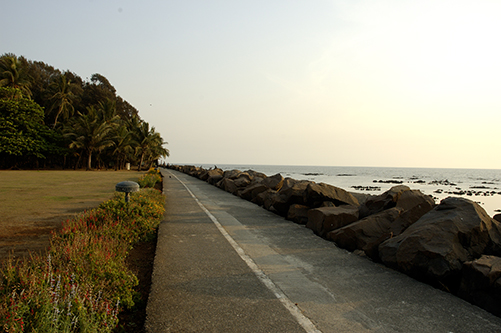
In a few walks, up and down the seashore at TIFR, Narasimhan had explained to me the whole Kodaira–Spencer theory
And then finally I started thinking about it, and as my luck would have it, I could solve it within a month. Not the problem that he had posed, but a special case of it, so to speak. I also felt that the special case was not sufficiently interesting, and so, I still didn’t talk to him about it. When he would ask me again, I would say “Yes. I am trying, and I am progressing” and so on. This was partly truthful at least, but also not the whole truth so to speak. It went on like this, and then at some point, I thought I could not go on like this. I told him “Well! I can do it, although in a very special case.” He asked me, “What special case?” and I explained to him. The problem was about what are called connections in the smooth category of differentiable manifolds. What I had done was to prove what he wanted in the case of analytic connections where it was easy. I found that some structures connected with analytic connections were easy to understand, and so I told him that I have done it in that case. He jumped and said “that’s good. That’s your thesis”. I was immensely happy, but I didn’t think it was good enough. But he knew better of course, and so I had an easy doctoral thesis, so to speak. Well, by that time, of course, I was hooked on to mathematics for good. Then he suggested that I work a little bit more on that, and also suggested that there may be some connection with discrete subgroups of Lie groups. He also referred to a paper by André Weil, and said, “maybe the two are connected. You should explore that possibility.” So, I did look at it and I found that indeed there was a connection. So that also went into the thesis. In fact, this actually moved me away from differential geometry, to Lie groups, and to discrete subgroups of Lie groups, which has been my sole preoccupation, more or less, for the last 60 years. Not wholly, but most of my work is in the area of Lie groups and their discrete subgroups. So not only did he make me get my degree, but also directed me towards my eventual specialisation completely. So that’s how influential his role has been, and it continued even later. He also had some role in advancing my career in other non-academic ways, so to speak.
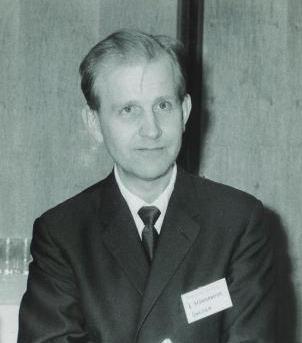



to be counted in those ranks in my very first international meeting was a very flattering thing indeed
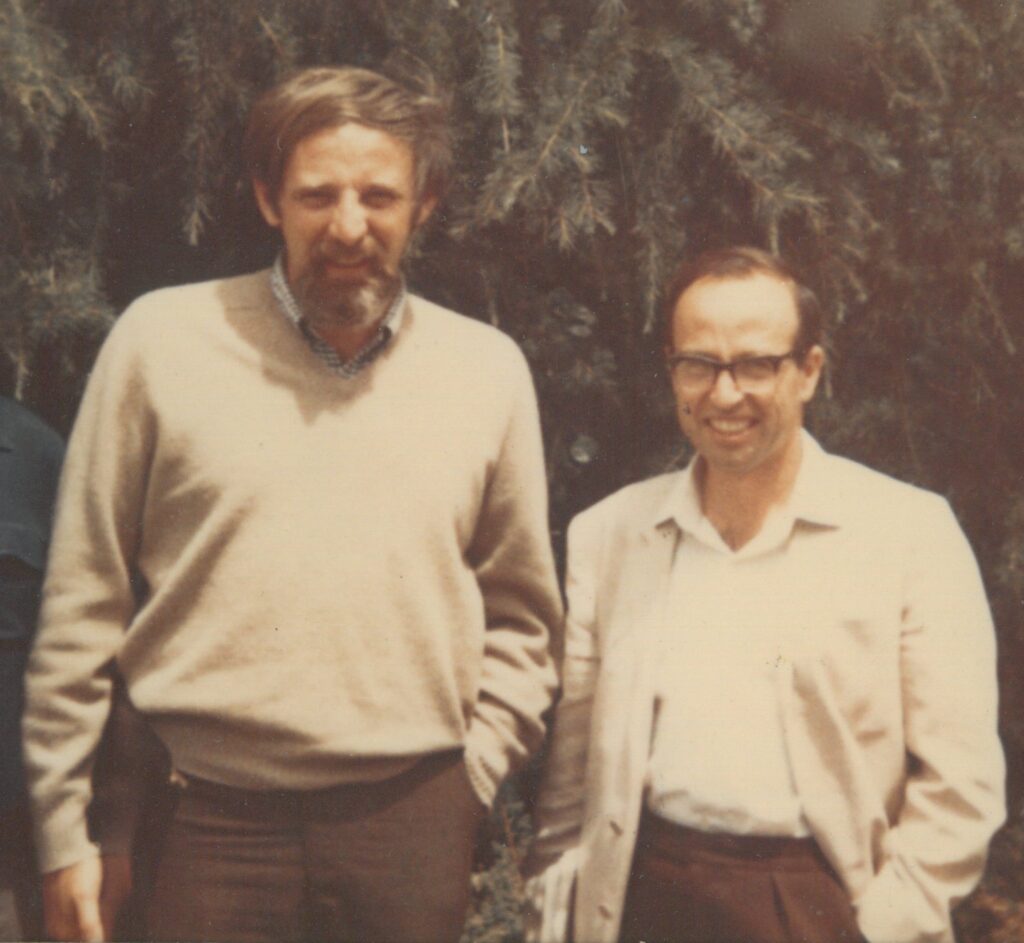
Mathematics became the mainstay of your life. You joined TIFR as a student in 1960, and in ten years, at the 1970 International Congress of Mathematicians (ICM) in Nice in France, you were invited to give a talk. We would like to hear your recollections. For instance, did you get to meet Abhyankar who was also at that ICM in Nice, and there is this poem titled `Polynomials and power series’, that he wrote then?
MSR:Ya, sure. Of course. I met Abhyankar there and he gave me a piece of paper saying, “Look I have written some poetry. You can read it.” It is a long poem attacking the Bourbaki, and Grothendieck’s name figures in there too.2
Actually, my first meeting with Abhyankar had taken place much earlier. In 1965, I was on my way to France. In those days, you didn’t have direct flights to go to Europe and the flight stopped in Egypt. I was in the transit lounge, and Abhyankar was also there. I didn’t know it was Abhyankar, but here was this person surrounded by a large number of people who were asking him various things, and he was responding. When I got closer to them, I heard the name Abhyankar. At which point, I went up to him and asked him if he is a mathematician. He said yes, and then I introduced myself. He was very nice to me, and that was my first meeting. I met him again in Nice, and he handed over this piece of paper to me. He said, `I have written a poetry’, which is of course wrong English, and that immediately struck me.

I think Narasimhan and Seshadri were also invited speakers at the same conference. Did you travel together?
MSR:Yes, they were also there. Narasimhan had left earlier as he was going to attend the general assembly meeting of the IMU. Seshadri and I travelled together, and in fact, we missed the first day because of some flight delays. The flight was through Italy and, in Italy, the connecting flight was overbooked. We had a big argument but they put us on a flight the next morning. We missed the Fields medal presentation and related proceedings of the first day. My talk was in the Lie groups session. It was well-received. I remember Calvin Moore came up to me, introduced himself and said it was a very nice talk. All in all, it was a nice experience.
You said you were very enthusiastic about topology and that you had learnt a lot of topology. Did it have any influence on your subsequent work?
MSR:Well, there is only one piece of work, or two maybe, where I did use some topology. I have applied some very beautiful theorems of topology to some of my work, but apart from that, topology did not seriously enter into my actual research. A couple of papers where I construct a Morse function, and another paper with F.T. Farrell and P. Ontaneda; with them, I have a paper that addresses a conjecture of S.T. Yau. It is a paper in topology if you like, and to which I contributed something which came from Lie groups. Apart from this, I am not really a topologist. Topology generally influenced my thinking and I was learning a lot of topology. In fact, at one point I could say that I knew much more topology than Lie Groups, which is my bread and butter. I did not pursue topology after the 1970s but until then I was abreast of whatever was happening in topology. In my work with Howard Garland, I did make use of the s-cobordism theorem; so that paper uses something from topology.
Now that you mentioned Lie groups as your bread and butter, how did you learn about Lie Groups? What were your sources?
MSR:I learnt Lie groups from Seminaire Sophus Lie, but before that from Chevalley’s book Theory of Lie Groups. These were books suggested to me by Ramanan and Narasimhan. They found out that I was interested in manifolds, and probably thought that I should learn some Lie groups. And so I studied Lie groups from Chevalley, and much later was fascinated by Seminaire Sophus Lie from where I really learnt a lot. In a sense, my going to Lie groups was inspired by Ramanan, who at that time was one of the few people at TIFR who knew a great deal about them.

Is this the work about cohomology vanishing?
MSR:Yes, that’s correct. The problem was interesting. Of course, my topology helped a little bit and occurs marginally because of the cohomology of groups, but it is elementary stuff from topology that I was using. That led me to something more on discrete subgroups of Lie groups. You see, I had written down lecture notes of Edoardo Vesentini who had come visiting TIFR in 1964, and there we had some cohomology vanishing theorems. I could see that those ideas could be used in the context of the problem I was looking at. I must say that I was very lucky in these things.
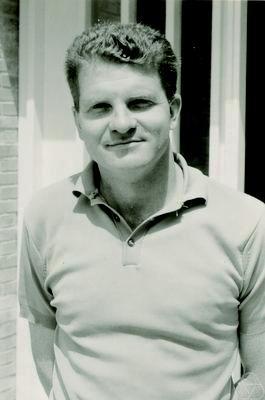
Your PhD journey is indeed very inspiring. How do you go about selecting research problems to work on, and how do you go about solving them?
MSR:Ah! This is always difficult, and it’s a problem that every mathematician faces: I have just now solved a problem. What should I do next? The point is that there is always a loose end, so to speak, even after you finish solving a problem. But if you have been constantly enhancing your scholarship, you are not that much at a loose end. You keep studying more and more, and then when you have done some work, you see how it is connected with the earlier work which you may or may not have studied.
For example, I encountered this entire area of discrete subgroups of Lie groups, in which I had no great scholarship. I came to it from differential geometry. Differential geometry does use some Lie groups, but discrete subgroups of Lie groups is a more specialized area inside Lie groups, so I had to start studying that. Then the problem that I solved, which connected my work with André Weil’s work, turned out to suggest new problems about discrete subgroups of Lie groups, and I started working on them. Once again, I had fairly early success. In the first half of 1964, I managed to prove a theorem about discrete subgroups of semisimple Lie groups as it’s called, which I could myself see was interesting, and it was published in the American Journal of Mathematics.
By the way, there is an interesting story there about my thesis. I was wondering where I should send my thesis for publication, and very hesitantly asked Narasimhan “Can I submit it to the Annals [of Mathematics]?”, and was surprised when he said “Yes. Go ahead.” And I submitted it to the Annals, but they rejected the paper. The paper was rejected for totally wrong reasons. The report made it clear that the referee had not understood the key points of the paper at all, but the referee had in fact somewhat gratuitously suggested that some little part of my thesis, which I myself didn’t think was very interesting, could actually be published elsewhere. Not in the Annals of course, but elsewhere. This of course upset me, and upset Narasimhan even more; in fact, it upset all my colleagues very much, because they all thought very well of that paper. My fellow students, and in particular Raghavan Narasimhan, told me that I shouldn’t let this go just like that; and he essentially dictated a stiff letter to Armand Borel, the Editor of the Annals of Mathematics, essentially telling him “you can reject the paper for Annals, but you have no business to tell me what I should publish, and where”. I also said the referee was incorrect in his perceptions about what the important point of the paper was.
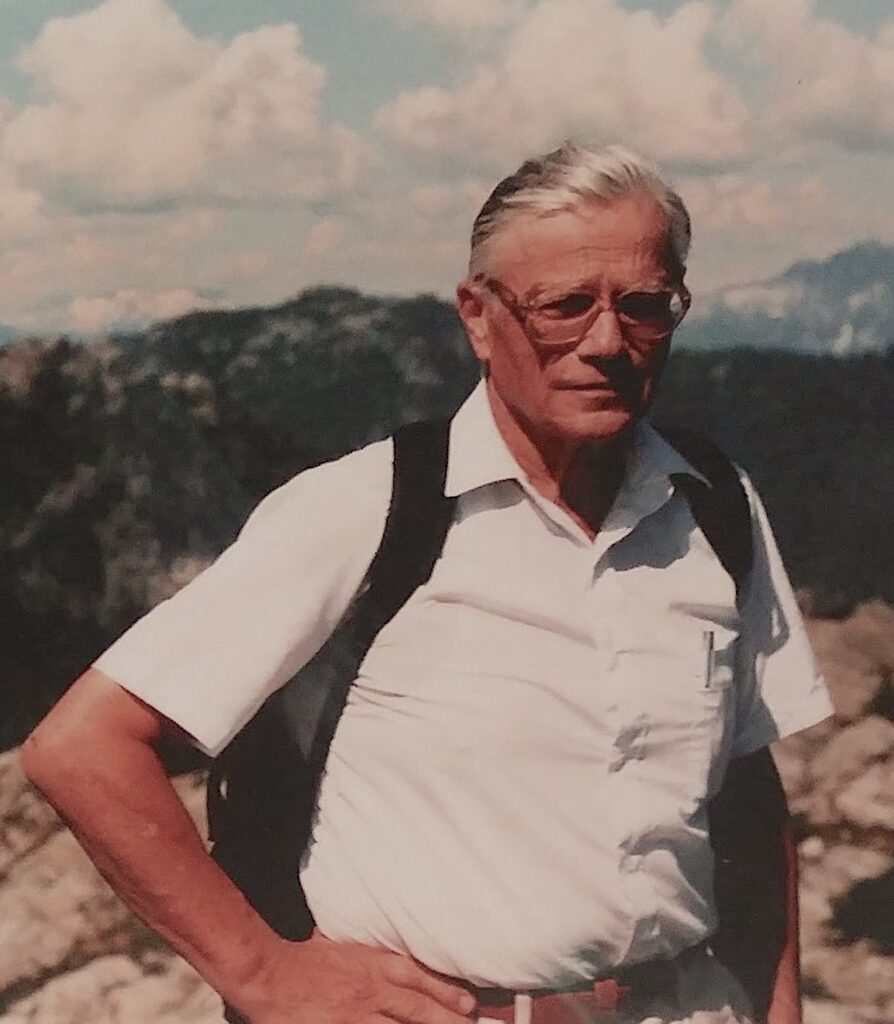
After that, there were new problems that occurred to me as a result of what I had already done. From the so-called discrete subgroups with compact quotients in semisimple groups, there arose a question about what happens if the quotient was non-compact but still had a finite measure. This was a very fertile period for me, and there were a number of things that I could prove about the non-compact case, which were all completely new. These were things that many people, including Armand Borel, were attempting to prove and had not succeeded. By the way, this American Journal of Mathematics paper also had the follow-up effect that I got invited to Grenoble by Jean-Louis Koszul, to spend three months there. This letter came to me as a total surprise, out of the blue literally. But as it turned out, Raghavan Narasimhan had met Koszul somewhere, and told him that there was this very good student who had done some very interesting work. And that it may be a good idea to have him over at Grenoble for three months. Also, one of the referees for that paper was a man by the name of\, Yozo Matsushima, whose work was closely related to that paper. Matsushima was also spending a year in Grenoble, and when a suggestion came from Raghavan Narasimhan, he seconded it; and so Koszul decided to invite me.
That’s the way things worked for me. Once you solve one problem, it has a natural tendency to suggest other problems. But there are certain times when you are at a complete loss, and you don’t know what to do. You look at some other problems to solve, and they don’t excite you, and so on. On one such occasion, for instance, I decided to read something on what’s known as `the congruence subgroup problem’ and embarked on reading the papers related to that. I happily announced a lecture course assuming that I will finish reading these papers and lecture on them. When I started reading these papers, I didn’t like the papers at all. The way they were doing it, with lots of calculations, matrices, all of which I didn’t like. So I was wondering whether I should pursue it, but I had also promised a course. So I put in some hard work, and I tried to understand things. At the same time, even as I was reading these papers, I tried to see if I could generalize it to a wider situation, thinking that when I lectured, my students would have some exposure to something more than what was available in the literature. Unfortunately, none of that worked, and my students were the guinea pigs. My attempted generalisations were often wrong, but the original proofs of course worked. I also managed to get a proof that was completely different from earlier work on it, but unfortunately, it was too difficult for me to communicate it to the students. It required a lot of background material which my students didn’t have. In all, this is how I got into the `congruence subgroup problem’, and this kept me busy for the next decade, so to speak. One problem led to another, and so on.
In the meanwhile, there was another thing I got interested in. This was the Serre problem about projective modules over polynomial rings. Serre made a conjecture about them at some point in the 1950s. He asked if every finitely generated projective module over a polynomial ring in n variables over a field is free. This conjecture evinced great interest in the mathematics community for a long time. C.S. Seshadri was the first one to give a proof in the case of polynomial rings in two variables. He had a proof, and then for a long time, nothing happened. Somewhere around the mid-70s, Dan Quillen and, independently, Andrei Suslin came up with the proof of the full conjecture. This is something which had interested me a lot, and so I read up whatever work was done, including Quillen’s proof.

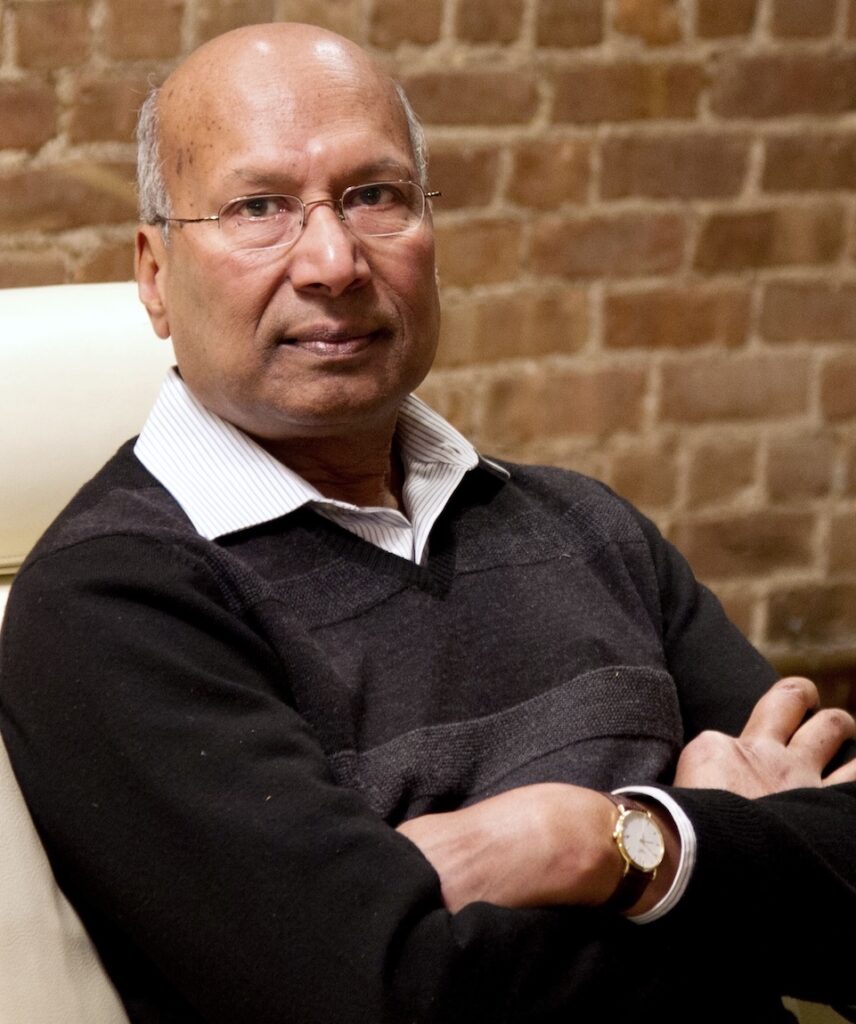
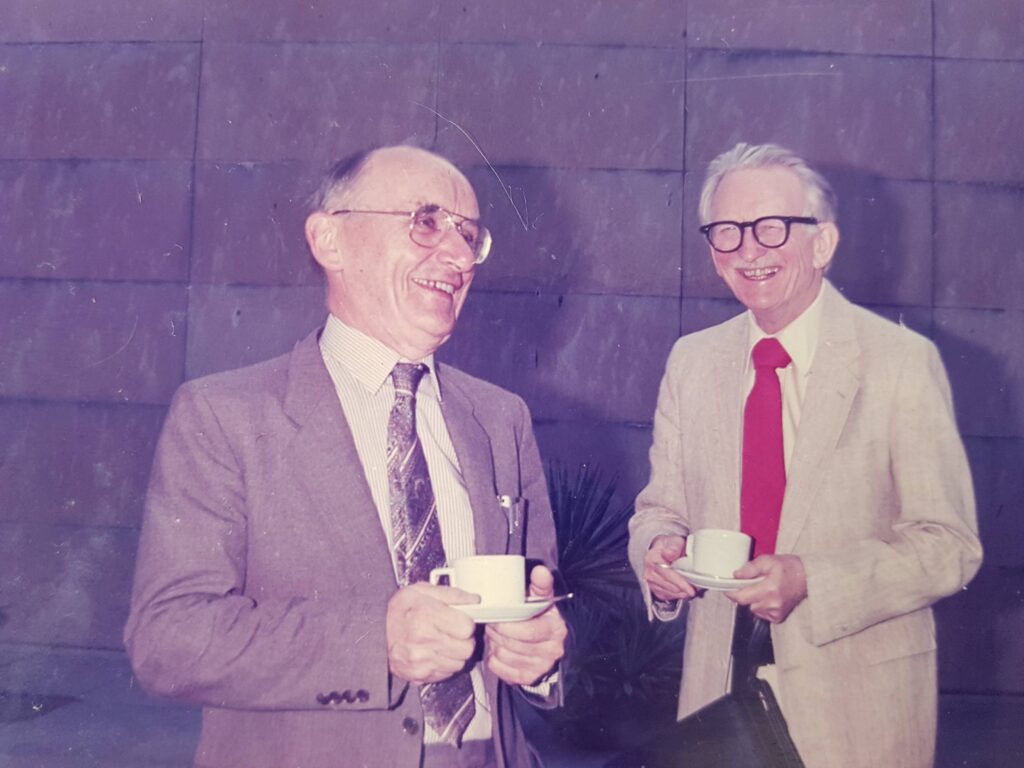
This is a good time to ask you about the international colloquia in TIFR, held once every 4 years, which is one of the unique traditions at least in India. We would love to hear your fond memories, mathematical or general, from these events.
MSR:The international colloquia are very prestigious events at TIFR, and as you people would know, it was Chandrasekharan who initiated it; the first one was in 1956, and the second one in 1960. I wasn’t there in either of these, and missed the 1960 event because I joined in August and the colloquium usually takes place around January, but that is the colloquium in which there was a big splash. Raghavan Narasimhan had proved a great theorem about the embedding of open Riemann surfaces in \mathbb{C}^3, the complex 3-space. It was a long-standing problem for something like 50 years.
The idea of these colloquia was to always focus on some subject in which there is a substantial contribution from TIFR, so that there are one or two speakers from here. For instance, in 1956, KC (K. Chandrasekharan) spoke on zeta functions. It was the same meeting in which Selberg also spoke about the trace formula. Selberg spoke again in 1960 on deformations of discrete groups, and that in some sense later triggered off my work. As mentioned earlier, I myself spoke in the 1964 colloquium. I have attended every colloquium after that as long as I was in TIFR, except in ‘84 when I was away from Bombay for a year visiting France.
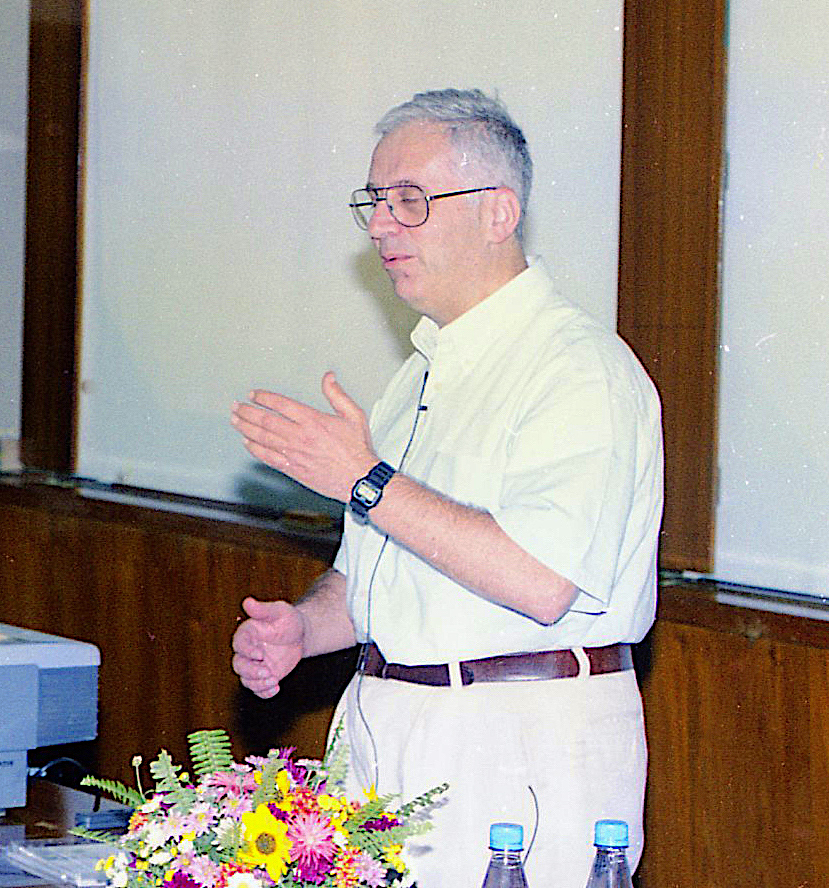
I have had a close association with these colloquia all through the 51 years that I spent at the TIFR, often suggesting topics for the conference. Several great mathematicians like J.-P. Serre, Alexander Grothendieck, Armand Borel, Pierre Deligne, Atle Selberg, R.A. Rankin, Hillel Furstenberg, and so on, have visited India during these conferences, and it is always a very exciting and inspiring week during these colloquia.
You mentioned things about how to work productively, and how to think among other things. These days, there is constant pressure to obtain results. How do you feel about this scenario? How was the situation at your time?
MSR:I am extremely sorry that this has happened. This whole thing is ridiculous, and the way promotion norms are set, all these numbers, you know, the so-called citation index, and all the allied nonsense, like the number of papers you have written. All this is utter rubbish, in my opinion. It doesn’t give you the correct picture at all. I have always found it terrible to see how a selection committee decision is arrived at. There are norms set down, and being on the selection committee does not help. You may not want the selection criteria implemented, but then you have to go by the norms, otherwise, the selection is not legally valid. Somebody will go to court, and say that it’s not done according to the norms. So it’s unfortunate that it works that way.
the mathematical works of Armand Borel and Jean-Pierre Serre were very much the sources from which I drew inspiration
I have seen many situations when a person has good scholarship, but doesn’t have the required number of publications. Even though the person would be a much better teacher and would pass on something much more worthwhile to the next generation than the other person who has published enough to meet the norms! Very often these papers are published in journals that are not particularly strong, and even if they are strong, they are not necessarily good papers. Good journals can also publish poor papers. This possibility is not ruled out. But part of the reason is that there is dereliction on the part of the selection committee. What they have to do is to study the individual’s papers to the extent possible, and arrive at a conclusion independent of all the criteria like citation index, number of papers, and such. One doesn’t have to study the papers in great depth. Looking at the introduction, seeing if the problem is interesting, and if you have a reasonable scholarship, you will make the correct judgement about the problem. Also, briefly leafing through it and seeing if the methods offer something interesting doesn’t need expending too much time. That is how the search committee should operate, but unfortunately, its hands are also mostly tied. Not that many members want to change the formula, but it should be changed. Fortunately, there are some institutions like the TIFR or IMSc that do not use these norms. I am not the only one who has no faith in norms.
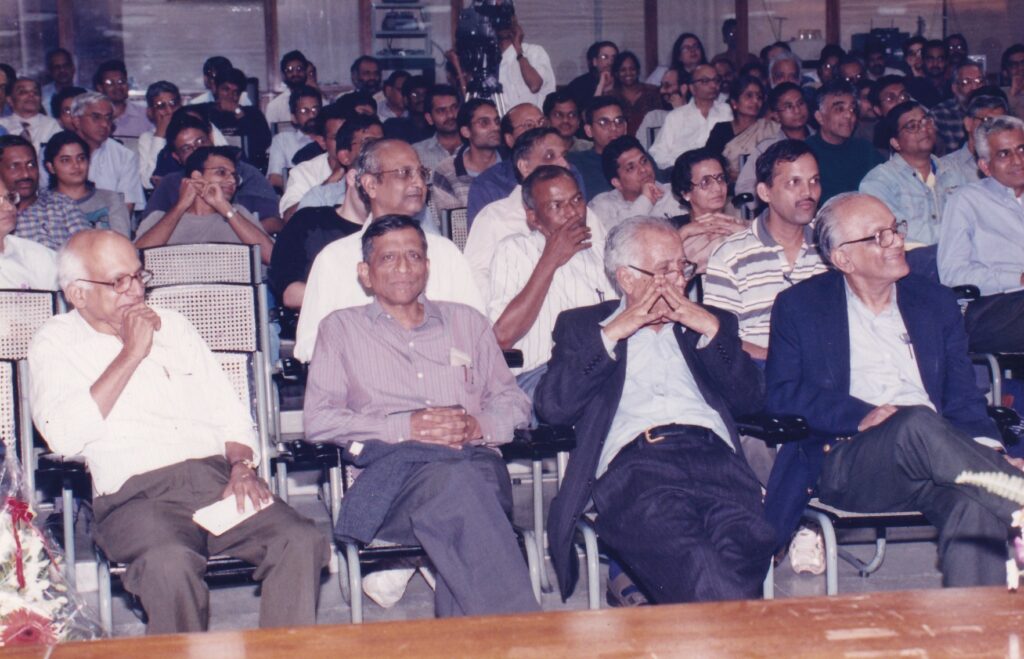
Many friends of mine, many mathematicians I know, do not want numbers at all, especially these so-called metrics. Even in the International Mathematical Union (IMU), the executive committee of which I was a member, we discussed it. And we were all of the opinion that these metrics are a very poor way of arriving at selection decisions. But that’s life today. I would like other leading institutions other than TIFR and IMSc also to ignore metrics.
It’s unfortunate that the present methods do not help to arrive at the correct kind of standards, though they are all formulated with the idea that your decisions will advance the standards of the institutions. Overall, standards have improved over the years, because willy-nilly, the quality of faculty in these areas has improved. However poor the selection methods may be, there are some very good people who still make the cut, even if you apply all these absurd metrics. They make the cut, and they get in, and once you have a good number of good faculty members, you can hope for a change.
Since you mentioned the IMU, we recall that you were at the forefront of getting the ICM 2010 to India. What was your motivation?
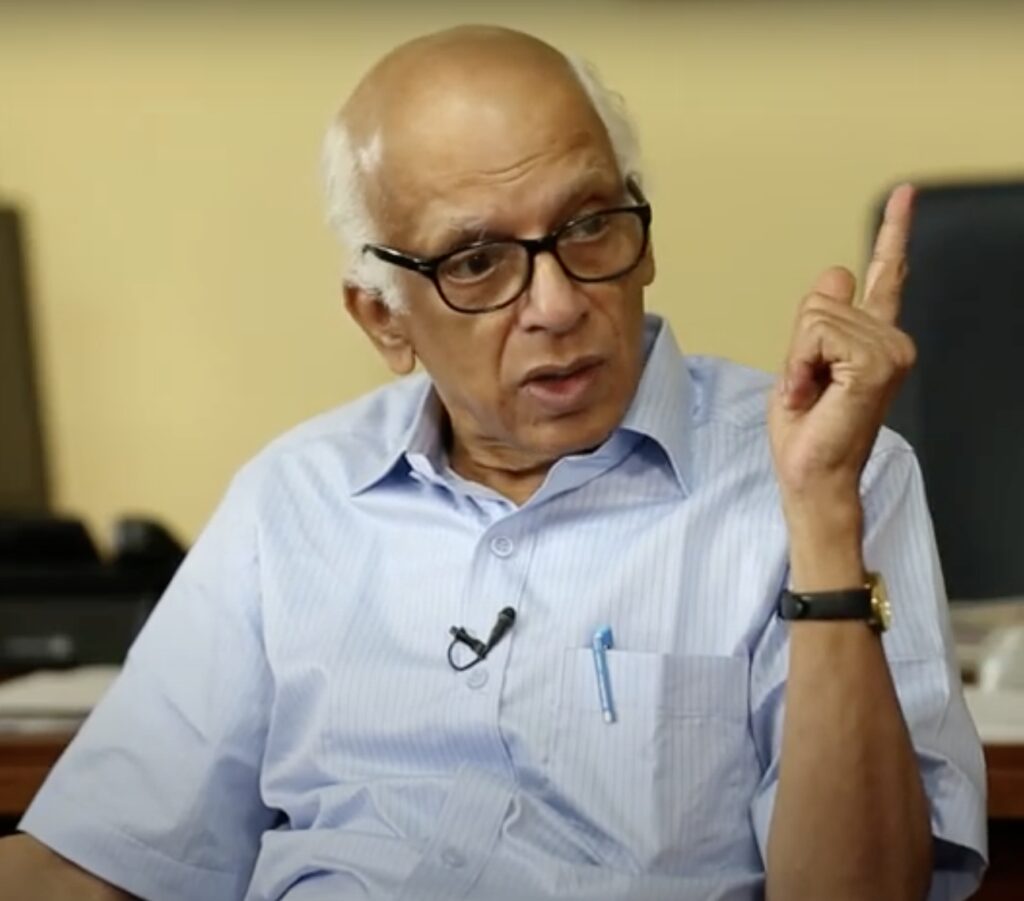
MSR:The proposal for organizing the ICM in 2006 in India was discussed but not approved by the IMU. The proposal for 2010 was accepted. My main motivation to push for the ICM in India was to excite common people with a mathematical event. I went for good publicity in India. The Lilavati prize for the popularisation of mathematics was a new idea. The DAE supported this award (15000 USD). It was given to Simon Singh who has done a marvellous job of popularisation of mathematics through his writing. Apart from the government funding of INR 12 crore, Infosys and many individuals supported financially for around INR 3 crore. Infosys also gave important support by offering their excellent guest house for free: it accommodated a large number of guests during the ICM.
The two other highlights were the play from the UK and a simultaneous chess event by the then world champion Grandmaster Viswanathan Anand. I am in particular proud of the latter idea. An honorary doctorate from the University of Hyderabad was awarded to Viswanathan Anand.
My main motivation to push for the ICM in India was to excite common people with a mathematical event
Could you reflect on your 20-year long chairmanship of the National Board for Higher Mathematics (NBHM), and the initiatives you undertook?
MSR:There was a general complaint that the department of atomic energy was not doing enough for mathematics outside its own institution, namely TIFR, and there was a need for the department to form a separate body for mathematics. A committee chaired by M.S. Narasimhan was formed in which I was a member, other members included S. Ramanan. This committee recommended forming the National Board for Higher Mathematics (NBHM) and also suggested the mandate of the NBHM. The NBHM was formed in 1983 based on this mandate. I was a member of NBHM and after a few years, in 1986, I became the chairman of NBHM.
One of the main things said in the mandate was that the mathematics being pursued at various Indian universities was not of very high quality and often had outdated curricula. It was suggested that NBHM should take efforts to improve this by organising summer schools for university students. Other early major initiatives were PhD scholarship awards and postdoctoral fellowships to pursue research in places other than the elite institutions, travel support for young researchers, NBHM library grants for many universities and colleges.
Panorama lectures, the Ramanujan birth centenary international symposium, grants for universities to invite international visitors, and travel support to ICM-specific travels were some of the activities during my tenure.
Are there mathematicians who have influenced your work all these years, or even whose work you particularly admire?
MSR:When I use the word admiration, I reserve it for someone like Margulis. In that group, among the people I admire, there would be J-.P. Serre and Pierre Deligne. Another mathematician we all know and all heard of and whom I admire is Robert Langlands. By the way, all these people are Abel Prize winners. That doesn’t mean that I admire only Abel prize winners. Among Abel prize non-winners too, there are some I admire. René Thom and Alexander Grothendieck, for instance were not Abel prize winners, but I am a no-hold-bar admirer of both of them. Thom was, in my opinion, the greatest topologist of the 20th century. Closer home, M.S. Narasimhan, C.S. Seshadri, Raghavan Narasimhan, C.P. Ramanujam and M.V. Nori are people whom I admire.
As for influences, M.S. Narasimhan was of course a major influence; so was Ramanan, especially in my formative years. Then the mathematical works of Armand Borel and Jean-Pierre Serre were very much the sources from which I drew inspiration; and the work of Margulis of course. Many of my students have had an influence on me in that guiding them led me to ask questions, and discussing mathematics with them gave me insights that I might have missed otherwise.
How did you come up with writing your book Discrete Subgroups of Lie Groups? How long did it take to finish writing the book? Please share with us your experience there.
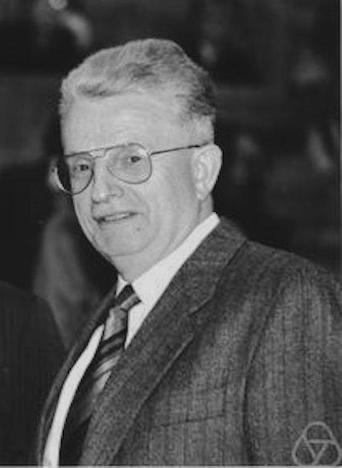
MSR:Ah! It didn’t take very long. It probably took me about six months to write the book, not longer than that. I was very excited about writing the book. Reinhold Remmert, a well-known German mathematician, wrote to me soon after my work on discrete subgroups of Lie groups had become reasonably well-known, and had drawn the attention of many leading mathematicians. Remmert, then one of the chief editors of the Ergebnisse der Mathematik und Ihrer Grenzgebiete series of Springer-Verlag, wrote to me a letter asking me if I would be interested in submitting a book to be published in the above series, essentially inviting me to write a book. I was flattered, and I said yes. It so happened that when I got this letter, I had already given a course of lectures on discrete subgroups of Lie groups at Yale, where I was visiting in 1968–69. And before my visit to Yale, I had given a less advanced course at the Tata Institute. Since I had done a good job of putting together material for this course, I felt why not go ahead and write it up as a book. The course itself had not covered as much as the book was going to cover, but a good portion of the book had been covered by the course. Also, I had not written down notes but I had it all in my mind, and so I readily agreed and started writing the book. It took me about six months to write the book. And in those days, I had to write by hand since there was no TeX available. It was typed in by some typists on stencils,3 and then you made cyclostyled4 copies of that, and that was what was sent for publication. Also, with stencils, typists could only type English in them. Greek, German, and similar scripts which were needed could not be typed in, and so they had to be stencilled in by me personally, which I did. So that was the way the book happened. But it was a labour of love, and so I enjoyed doing it, and this is the reason why it took me less than six months to write.
I was visiting Japan when the proof sheets from Springer arrived. I corrected them (Ramaa helped a great deal) but unfortunately, the corrected proofs were lost in an air crash of the Japanese Airlines JAL (over Mumbai). The Japanese Post Office informed me of this and I had to do it all over again and in a hurry. I had foolishly not kept a copy of the corrected proofs.
it was a labour of love, I enjoyed doing it, and this is the reason why it took me less than six months to write
You have already commented on this earlier, so let me rephrase the question a little bit. How would you compare the overall research environment in India with that of the USA, and European countries? Where and how can we improve? What changes would you like to see in the next 20 years?
MSR:Well! The kind of change I would like to see in the next 20 years is probably a pipe dream. You know there is really no comparison between the situation in the US and the situation in this country. We have maybe half a dozen, and maybe if I stretch the point, maybe a dozen institutions that can compare with good American universities, in the context of quality research in mathematics. I think a dozen is already stretching the point. Three or four of the IISERs which have come up are pretty good, and are comparable to graduate programmes in good graduate schools in the US and Europe, but cannot be compared with the top ones outside India. And then, there are of course TIFR, IMSc, ISI, CMI, IISc, HRI and some IITs. I am sorry to say this, but not all, and only some IITs I think are good. The point is that, in our graduate schools, many graduate courses are not offered at all. Only a limited number of graduate courses are offered, and the field spread is also limited. There are many areas in which we don’t have real expertise. For instance, there are very few institutions where there is faculty working at a higher level of algebraic geometry, or even in algebraic geometry at all; and so there will be no graduate course in algebraic geometry in such places. Lie groups is another area in which there are very few faculty members in many schools, and Lie groups is supposed to be one of the central areas of mathematics these days. They crop up in almost everything, and in number theory too via what are called automorphic forms. This whole subject is known as the Langlands program. For such things, there are very few places where you have experts available, and therefore it’s not surprising that there will be no graduate courses in these places. This is despite the fact that over the last twenty years there has been some improvement in faculty quality in some institutions.
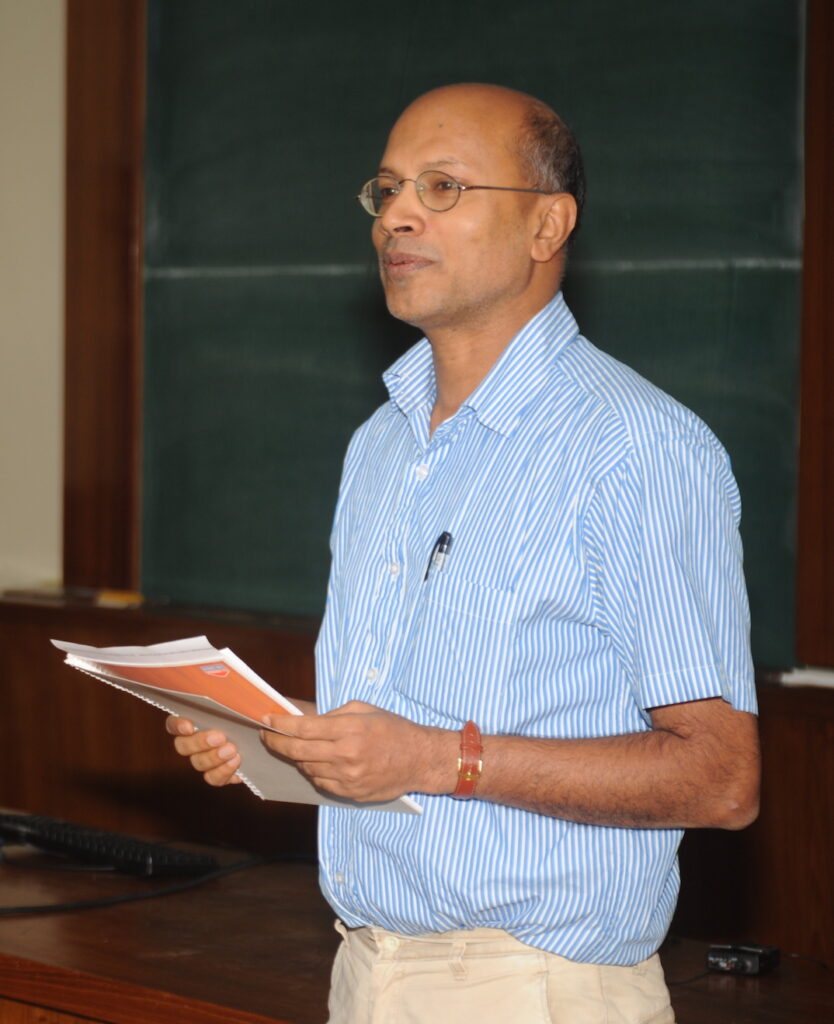
Anyway, I do not have a blueprint as such, but what universities or institutions of higher education should be doing is to improve the quality of their faculty. Once recruited faculty gets better, things like formulation of syllabus and so on will be in the hands of competent people. The faculty may also follow obvious models that are available in the American system, which works very well. Except, as I said earlier, that the American system has one flaw, in that they don’t encourage scholarship. That is something that we have to be careful about, but in a really good American school, scholarship is sufficiently emphasised. If you go to Harvard, there will be a plethora of courses that you could attend, and the best students coming out of Harvard are usually excellent scholars. They know a hell of a lot of mathematics.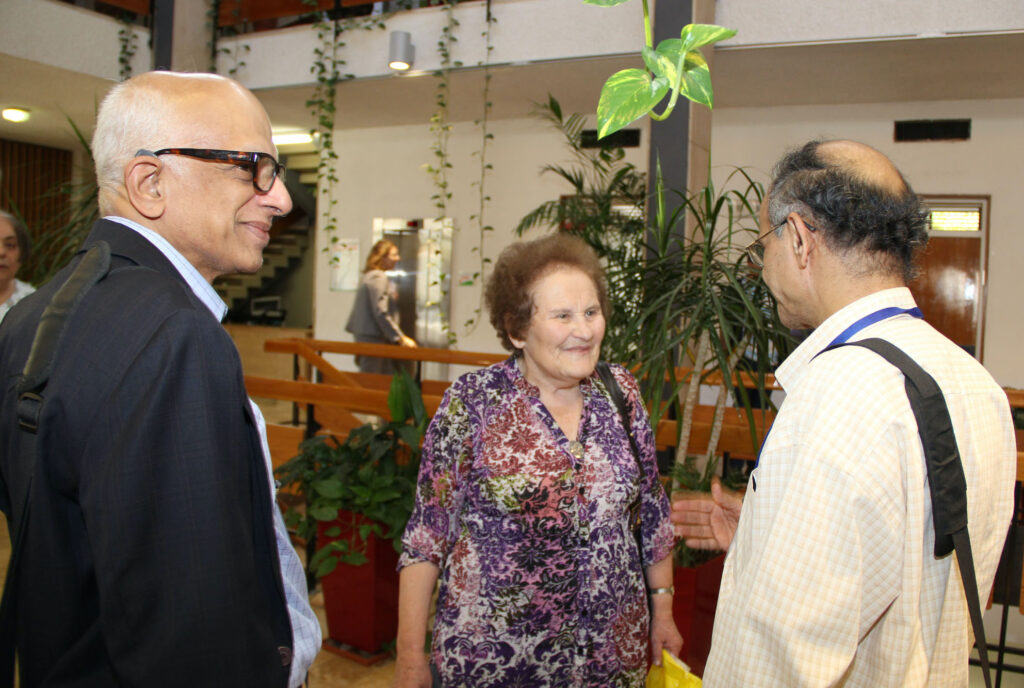
Emphasis on scholarship is one of the reasons for the success of TIFR. I can tell you one story. Dipendra Prasad was a student at TIFR, and a top-class one at that. We decided that since we didn’t have enough experts among us in the kind of number theory that he was interested in, he should go to a good place where he could get that help.
It was decided that he should go to Harvard. He applied to Harvard and, with very strong letters of recommendations, made it. After a couple of years there, I met Barry Mazur, a Professor at Harvard and this was at one of the ICMs. I was talking to him, and then at one point I asked “How do you find our student in your department?” “Who are you talking about?” he asked. I said “Dipendra Prasad”. His response was, “Oh, you call him a student? He knows more mathematics than most assistant professors”. That indicates the emphasis that TIFR placed on scholarship with its consequent success.
How do you deal with the frustration that comes in the way of pursuing research? How do you keep yourself motivated to do research when you are stuck at some problem for a long time?

MSR:Oh, well! I really have no answer for that. In my own case, if I did probably feel frustrated for a while, I would learn some more new mathematics. That seemed to help when I was not able to do original research. But if learning mathematics is also difficult, then I don’t know what to do. So, learning mathematics and teaching it to somebody was certainly an outlet for me to keep frustration at bay. I must say that at no point have I felt the effects of frustration very seriously. But I have known other people among my friends and students who have gone through spells of frustration. Each individual has his or her own peculiarities, so it’s often very difficult for an outsider to deal with them. If you do something right with one person, it may not exactly be the right thing for another person.
Yes, that’s very true.
MSR:I can tell you one situation about which I still have bad feelings. A student of mine did a piece of work. He was a very bright student and had this piece of work that he had done on his own, suggested by some earlier work of Atiyah. Atiyah had done it for most of the important cases, and this student came up with the proof for one other case in something called periodicity. I looked at it, and it was a routine generalisation of what Atiyah had done, and I thought that he could do much better. I felt he was bright, and therefore thought that he should not settle for this. I told him that I didn’t think that it was worth publishing, and I think it caused him a great deal of frustration. It was a bad thing. I didn’t know how to get him out of it. In fact, I felt much worse because some six months later, a student of Atiyah published exactly the same thing. I felt wretched. I was, at that time, young and somewhat harsh in my judgments. I thought this work was not good enough for him, and that he could do much better. In some sense, my positive opinion of his abilities, unfortunately, worsened the situation for him. This is why I am a little nervous when I want to try to “encourage” somebody.
Even as one’s academic career progresses, what would be your advice to young students on being both a good researcher, as well as a good teacher?
MSR:I will tell you one thing. If you know your subject very well, it is not difficult to be a good teacher. It comes with experience as you go along. You develop communication skills. Lecturing is after all communication. Effective communication is directly related to your own ability to understand something. If you understand something, sooner or later, you will arrive at a modus operandi for communicating it. You should also, and this is from my own experience, avoid the tendency to say too much. You have to decide how much you are going to say in a class lasting an hour. Equally important is to take advice from fellow teachers who are senior, and who also have a reputation for being good teachers. As I told you earlier, my first good lecture was given with the help of inputs from Narasimhan and Chandrasekharan, both telling me how to do it.
In the light of what you just mentioned, what do you think about online teaching? Do you think it will help?

MSR:I have myself taught an online course. I am not happy with it. For my lectures, I prepare myself mentally in half an hour and then go to lecture. I don’t prepare for more than half an hour, because most of the time I am lecturing on topics which I am totally familiar with. When I do this on the board, I can also correct myself if I make a mistake. Secondly, I can watch the faces of my students, and assess if people are following me or not. And when somebody is not following me, I can either repeat myself, or say the same thing in a different way. All this is not feasible in an online interaction. Also, because I have to prepare a lecture like a PowerPoint presentation, it takes a lot of effort from me. On top of that, I can not change things dynamically in the middle, to suit the audience. I also don’t see faces. People often don’t prefer to appear on screen too, choosing to deactivate their video. If I become a little more tech-savvy, so that I can do the corrections dynamically on the spot, maybe I will take to it. But I sincerely hope that this phase will pass, and I won’t have to do it. Even the best of teachers can not do as good a job online, as they can do in a person-to-person contact conventional classroom.
If you do something right with one person, it may not exactly be the right thing for another person
You have been recognised for your work with distinguished honours like the Third World Academy of Science (TWAS) award, elected as Fellow of Royal Society of London and then the Padma Bhushan. How exactly do you feel about them?
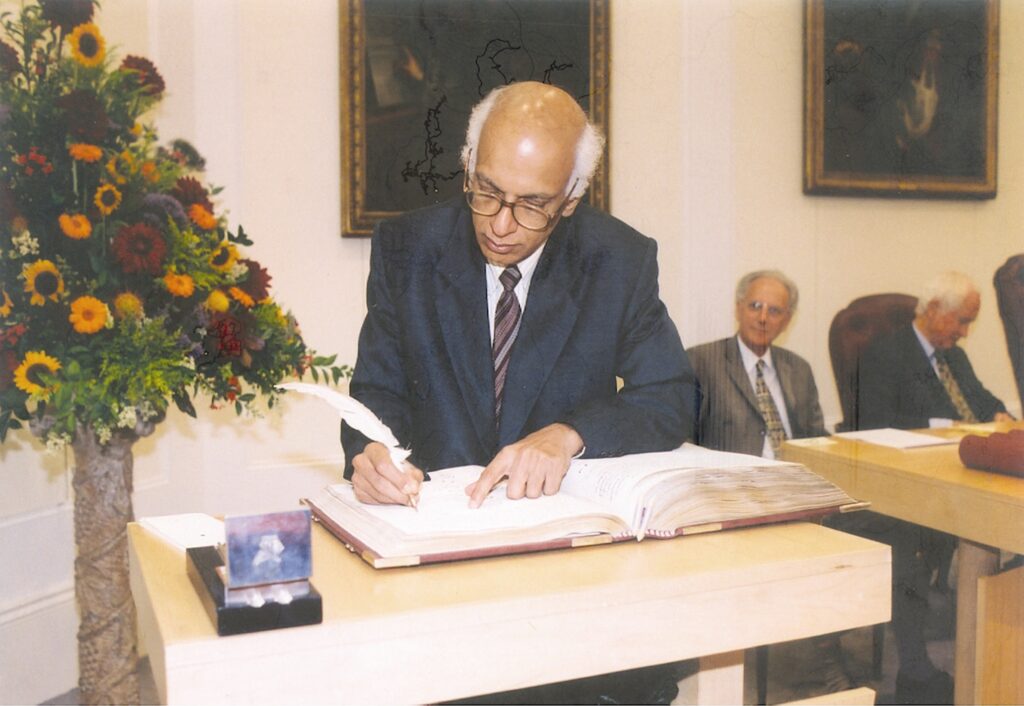
MSR:Well. It’s a difficult question. In some sense, I am of course happy to have got these things. It’s a good thing, but you know, after all, in all these things you can always see that there are other people who have got it who of course have achieved much more than I have in their own fields, and there are people who don’t deserve it at all in my opinion. So, where one places oneself is not clear.
I don’t want to sound morally a very superior kind of a person. There is no question that I am quite pleased when I receive an honour. In a sense, I would have felt somewhat disappointed had they not come, especially the Royal Society fellowship because I was proposed for the fellowship first in 1983 by Harish-Chandra, which pleased me immensely. I didn’t know who were the people seconding him, but it turned out the other supporters were Langlands, Atiyah and Adams. My nomination stayed there for seven years and I didn’t get elected; that was a bit of a disappointment. Later, Seshadri nominated me in ’98 or ’99, and I got elected in 2000. If you are proposed and are not elected within seven years, you can’t be renominated for another three or four years, which explains the long gap.
These kinds of things may perhaps be the reason for my rather mixed reaction to honours and awards.
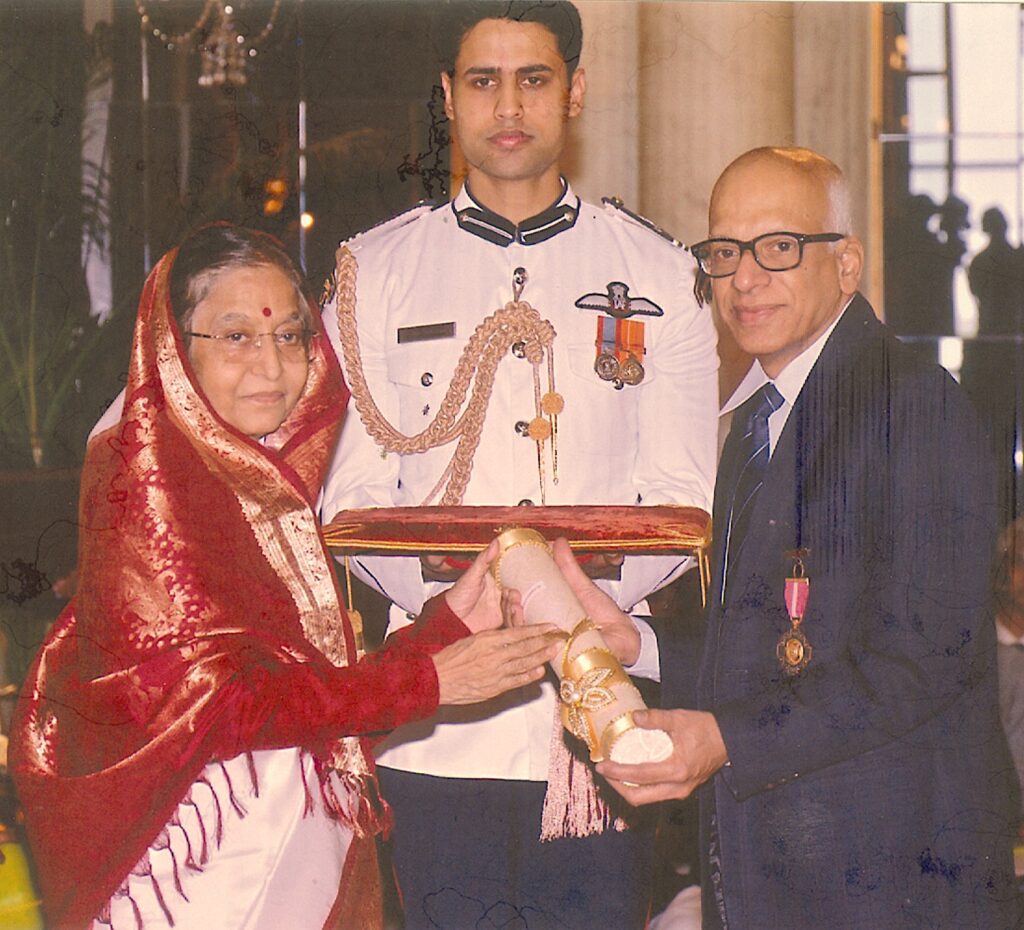
You have had a long and distinguished career spanning five decades at TIFR. How do you reflect on perhaps one of the longest stints there?
MSR:Yes, I joined in 1960 and technically I retired from TIFR in 2006, but I continued for 5 more years as the Homi Bhabha professor. This position, given by the DAE, allows you to work anywhere and TIFR gave me permission to work there, and I continued to participate in many of its activities. So I was there for 51 years when I retired in 2011. If you block the Homi Bhabha professorship, it will be 46 years for the technical period, and I don’t think any other mathematician or scientist has spent 46 years as a member of TIFR. I have had a very satisfying career.
Your wife Ramaa is a masters in mathematics. And your son Ravi also took up mathematics. Though you mentioned that you came to mathematics by accident, it became the mainstay of your life in more than one way.
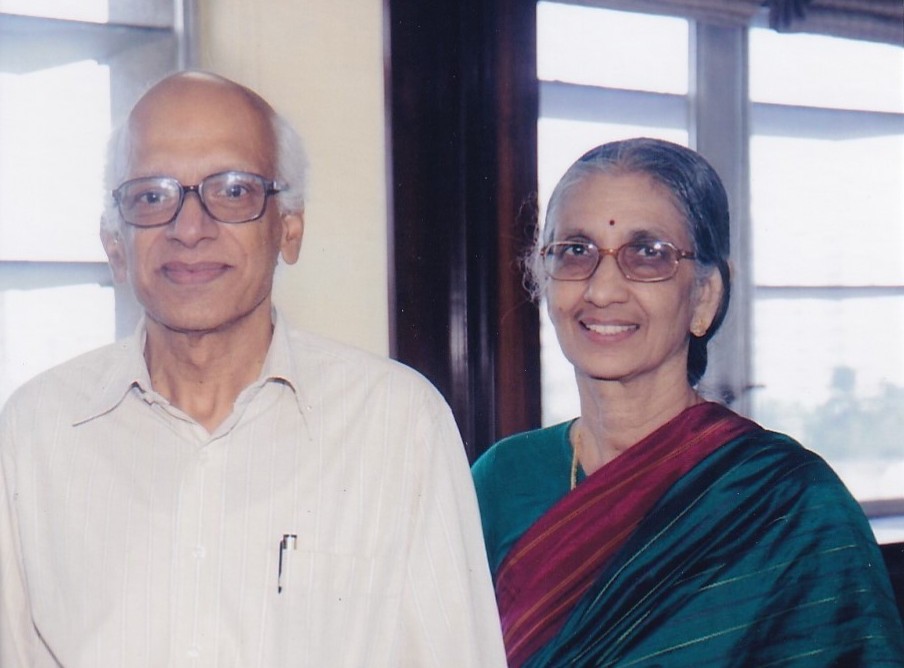
MSR:Right. She has a masters degree in mathematics but her strength is in literature and languages. Her greater interest is in English literature and she also has a feel for languages. She can speak many languages. She taught mathematics in Cathedral School, Bombay. She also taught French. When her French students were also among her mathematics ones, she amused them by telling them about Bourbaki, and once giving a passage on Stoke’s formula from André Weil’s autobiography for dictation in French.
Ravi made a decision to pursue mathematics already when he was in college. After his plus two, he chose physics as the discipline to pursue in BSc, but midway during his first year in BSc, he decided to switch to mathematics. Unlike me, he took his decision to pursue mathematics much earlier.
Thanks a lot for patiently answering all our questions. We enjoyed interacting with you a lot.
MSR:Thank you! That was a kind thing to say. I am glad you enjoyed this meeting. I was a little worried because once I start talking, it is difficult to stop. You let me talk!\blacksquare
Acknowledgement Our sincere thanks are due, to the interviewers of the sessions we have drawn from, namely Soumya Dey, Saipriya Dubey, Kriti Goel, Shashank Vikram Singh, Gadadhar Misra and T.N. Venkataramana. Our grateful thanks to Robina Gupta of the Robin Reels Production for the kind consent to make use of their wonderfully shot five episodes, and the organizers of the 80th birthday conference in honour of M.S. Raghunathan who facilitated the interview with him. We take immense pleasure in thanking Shilpa Gondhali and Srinivas Kirthy for their kind help with transcribing from the video recordings.
Footnotes
- Baccha is a word in the Hindi language that means “a young inexperienced kid”. ↩
- This poem is reproduced here: ↩
- An impervious material, such as a sheet of paper or thin wax, perforated with lettering or a design through which a substance, such as ink, is forced onto a surface to be printed. ↩
- The Cyclostyle duplicating process is a form of stencil copying. A stencil is cut on wax or glazed paper by using a pen-like object with a small rowel on its tip. A large number of small short lines are cut out in the glazed paper, removing the glaze with the spur-wheel, then ink is applied. ↩
